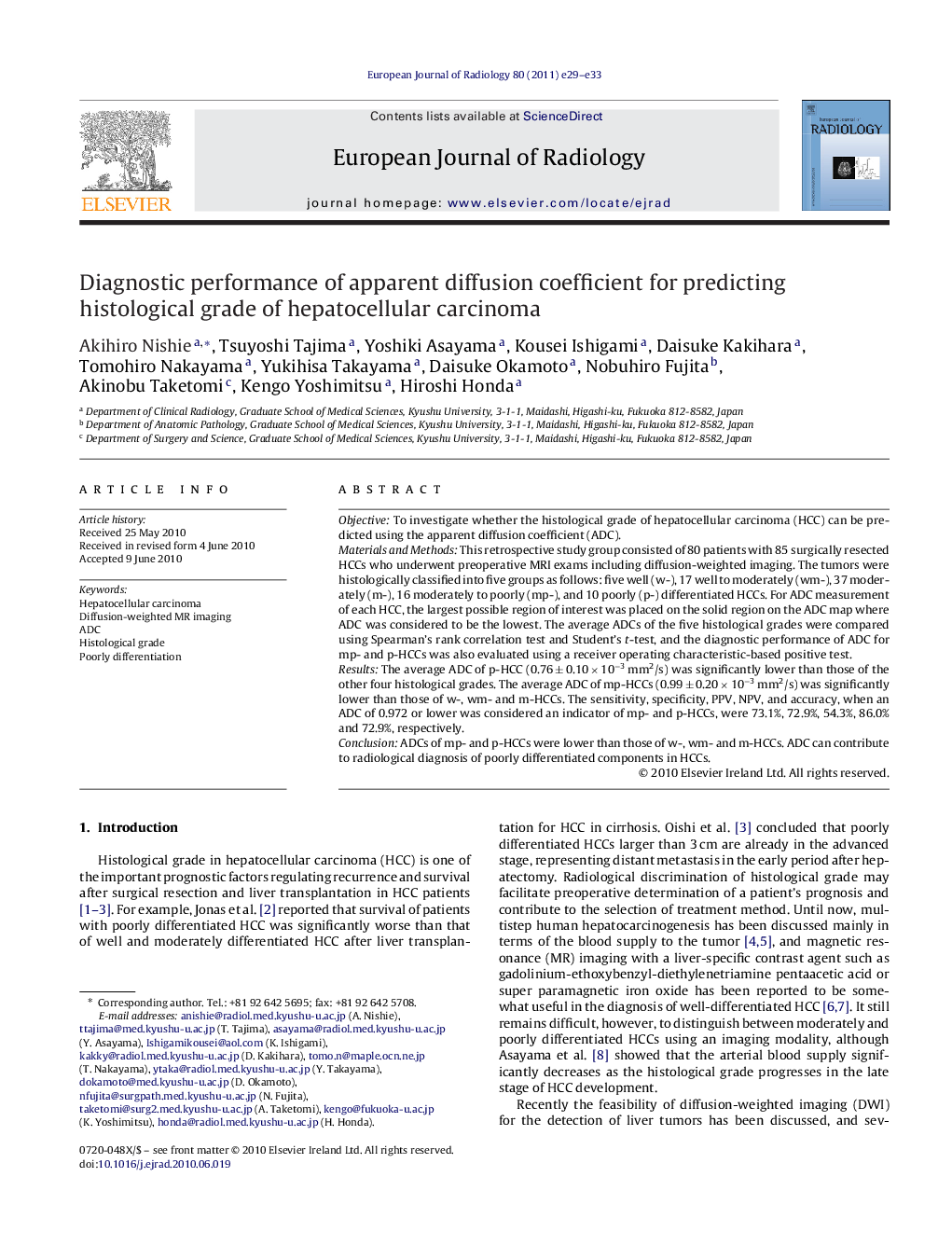| Article ID | Journal | Published Year | Pages | File Type |
|---|---|---|---|---|
| 4226245 | European Journal of Radiology | 2011 | 5 Pages |
ObjectiveTo investigate whether the histological grade of hepatocellular carcinoma (HCC) can be predicted using the apparent diffusion coefficient (ADC).Materials and MethodsThis retrospective study group consisted of 80 patients with 85 surgically resected HCCs who underwent preoperative MRI exams including diffusion-weighted imaging. The tumors were histologically classified into five groups as follows: five well (w-), 17 well to moderately (wm-), 37 moderately (m-), 16 moderately to poorly (mp-), and 10 poorly (p-) differentiated HCCs. For ADC measurement of each HCC, the largest possible region of interest was placed on the solid region on the ADC map where ADC was considered to be the lowest. The average ADCs of the five histological grades were compared using Spearman's rank correlation test and Student's t-test, and the diagnostic performance of ADC for mp- and p-HCCs was also evaluated using a receiver operating characteristic-based positive test.ResultsThe average ADC of p-HCC (0.76 ± 0.10 × 10−3 mm2/s) was significantly lower than those of the other four histological grades. The average ADC of mp-HCCs (0.99 ± 0.20 × 10−3 mm2/s) was significantly lower than those of w-, wm- and m-HCCs. The sensitivity, specificity, PPV, NPV, and accuracy, when an ADC of 0.972 or lower was considered an indicator of mp- and p-HCCs, were 73.1%, 72.9%, 54.3%, 86.0% and 72.9%, respectively.ConclusionADCs of mp- and p-HCCs were lower than those of w-, wm- and m-HCCs. ADC can contribute to radiological diagnosis of poorly differentiated components in HCCs.
